Gibraltar, Home to the Gorgon Medusa after gorgoneion found in Gorham's Cave shows ancient mariners revered the cave
By Nick Nutter | Updated 15 Mar 2022 | Gibraltar | History |
Login to add to YOUR Favourites or Read Later
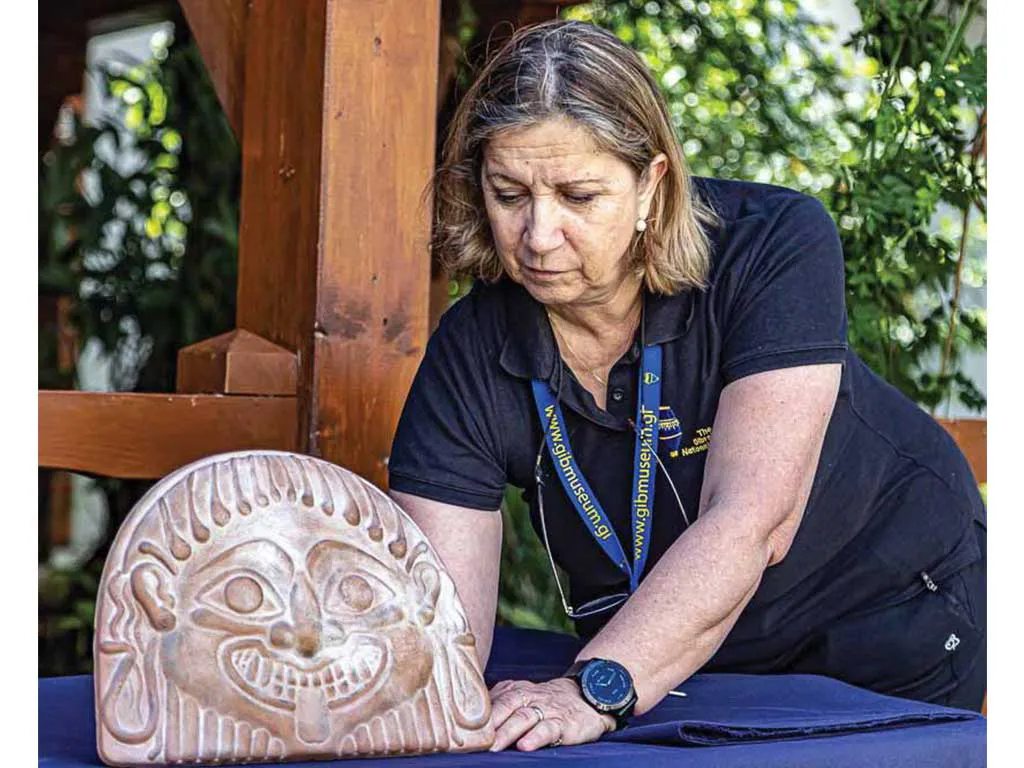
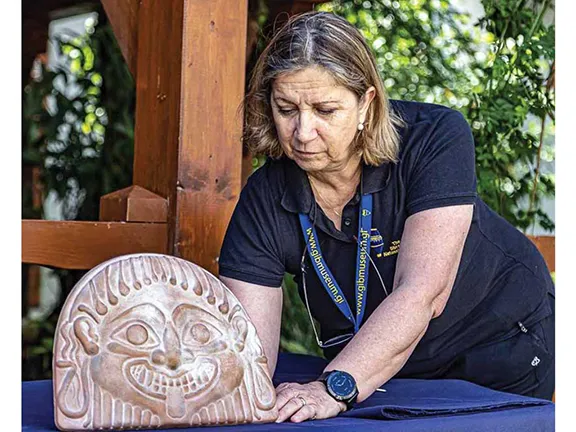
The Gorham Cave Gorgoneion reproduction
Very rarely, archaeology appears to lend credence to a myth. The discovery, in Gorhams Cave, Gibraltar, of fragments of a Gorgoneion, a ceramic representation of the Gorgon Medusa, revealed at the Calpe Conference 2019, is one example.
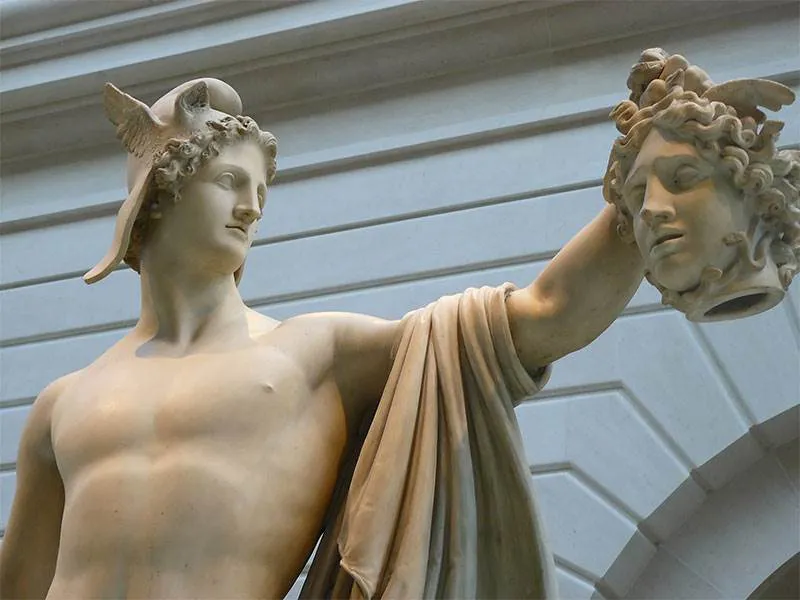
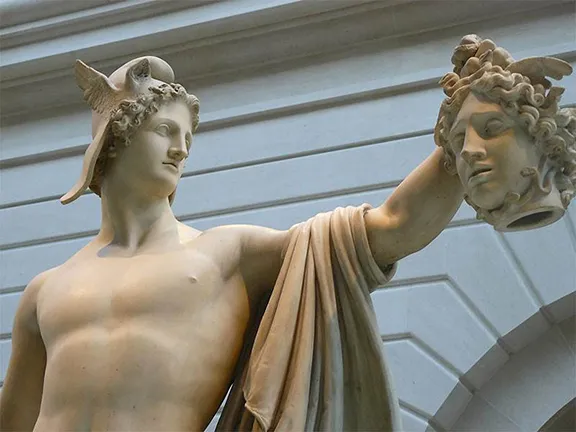
Perseus with Medusa
The story starts with Perseus. In Greek mythology, Perseus is the founder of Mycenae and the Perseid dynasty. He was the son of Zeus and the half brother and great grandfather of Heracles - don't ask, an incestuous lot those Greek gods and demi gods.
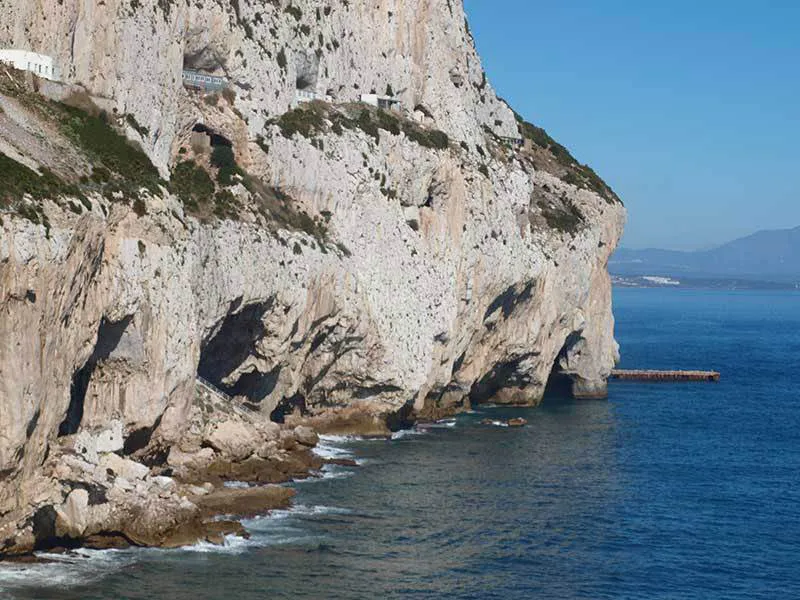
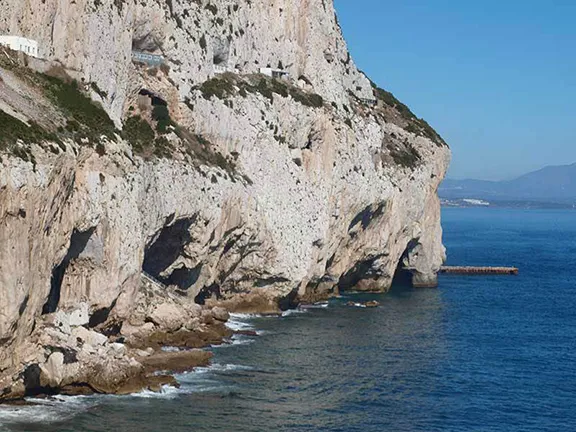
Gorham's Cave, Gibraltar
His pursuit of the Gorgons, three sisters whose gaze could turn men to stone, and who, famously, had heads of writhing snakes, is as a result of a promise he made to another god, Polydectes, to provide him with any gift he desired. Polydectes elected to have the head of the only mortal Gorgon, Medusa. Perseus first set off to find the Hesperides, the ‘Nymphs of the West’, also called Atlantides, who possessed weapons needed to defeat the Gorgons. The Hesperides supplied him with a knapsack to safely carry the detached head, Zeus himself gave Perseus an adamantine sword and a ‘helmet of darkness’ to hide his gaze from the sight of the Gorgons. Hermes lent him winged sandals to allow him to fly and Athena gave him a polished shield.
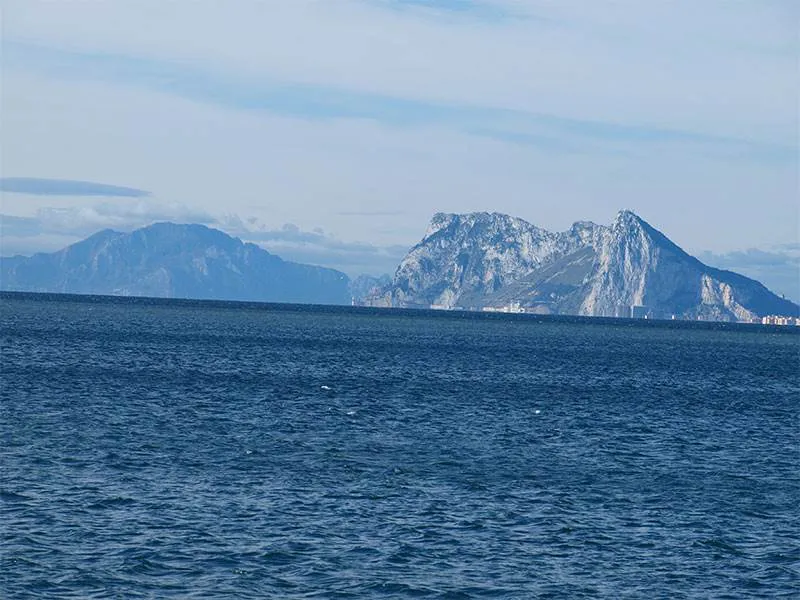
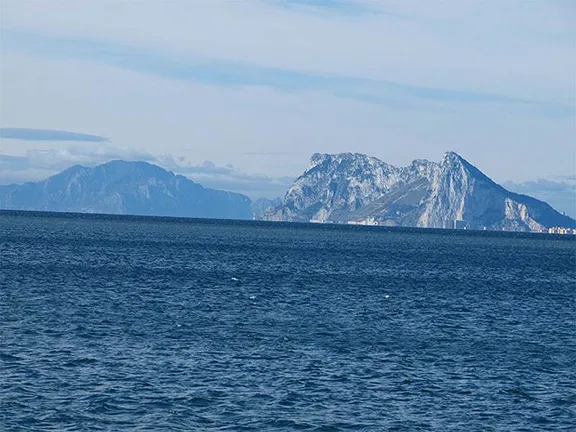
Pillars of Hercules. Gibraltar right, Jebel Musa left
When Perseus found the cave in which the Gorgons lived, he used his polished shield to view reflections of the Gorgons, cut off Medusa’s head and, wearing his ‘helmet of darkness, escaped.
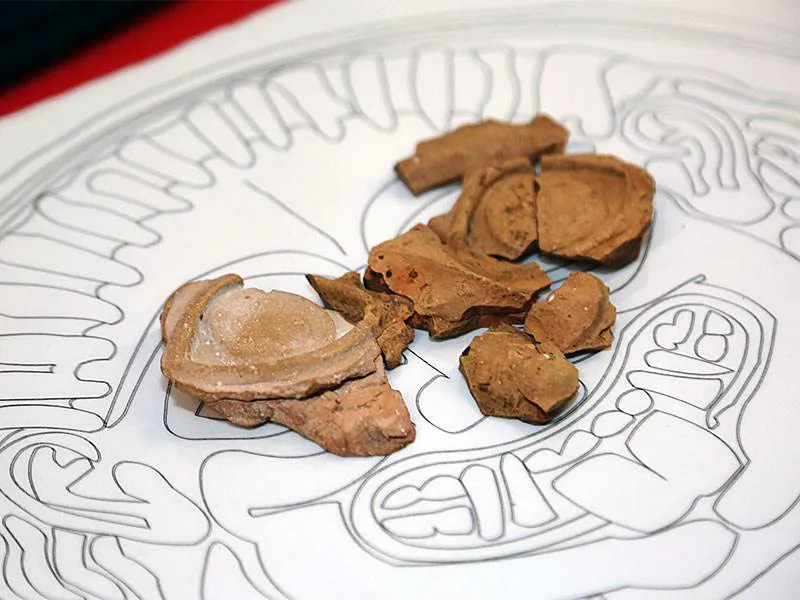
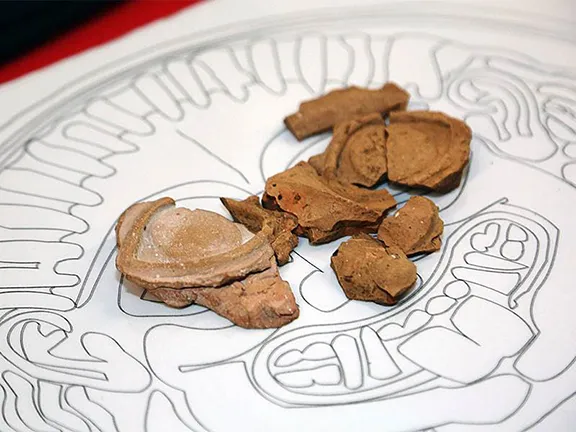
The Gorham Cave Gorgoneion
Although a very edited account of the myth, all the ingredients are there that persuaded later western scholars to look towards the western Mediterranean for the mythical location of the Gorgon’s cave. First the mention of Heracles, who, in another myth is credited with creating the Gibraltar Strait, then the Hesperides, also known as Atlantides, an obvious reference to Atlantis, long thought to be located beyond the Pillars of Hercules. The Hesperides are also known as ‘Nymphs of the West’.
The only missing part of the puzzle is the cave itself.
Gorham’s Cave, near Europa Point on Gibraltar, the northern ‘Pillar of Hercules’, had been inhabited by Neanderthals and then by modern humans during the Mesolithic and Neolithic periods. It was later a shrine for Phoenician, Carthaginian and Roman seafarers. With the discovery of the Gorgoneion in the deepest recesses of the cave it seems likely that those ancient mariners believed the cave was formerly the home of the Gorgons.
Gorgoneions are protective amulets that typically depicted only the head of the Gorgon, complete with snakes. Legend has it that they were worn by Zeus and Athena. The depiction of a Gorgon head started to appear in Greek art after the 8th century BC. Since then the depiction has appeared in churches, on doors (to protect the inhabitants), on weapons and fashion items.
In March 2021, Chis Finlayson, the project lead at the Gibraltar National Museum, said 'It was a shrine, a place of worship for the ancient mariners. ... We thought it was only holy for the Phoenicians but now we know it was also holy for the Greeks.'
This find confirms that ancient Greeks genuinely drew a link between the place, Gorham's Cave, and the myth, and that they did so as early as the Archaic period.
Before the Gorham’s Cave Gorgoneion was discovered, there actually was no material evidence that the ancients drew a link between the mythical Gorgons and the real Gibraltar.
As Dr Peter Gainsford, a classicist based in Wellington, New Zealand, said, 'The Gorgoneion is significant, but not because it proves Gorgons were real. It’s because it’s the first material evidence that Greeks actually did visit Gibraltar. It’s because it’s the only Gorgoneion of its kind in the western Mediterranean. And it’s because it’s in a cave, not a temple. It is genuinely a unique find. There was no permanent Greek settlement at Gibraltar, so whoever put the Gorgoneion there — in a deep part of the cave, no less — made a special visit, and went to some trouble'